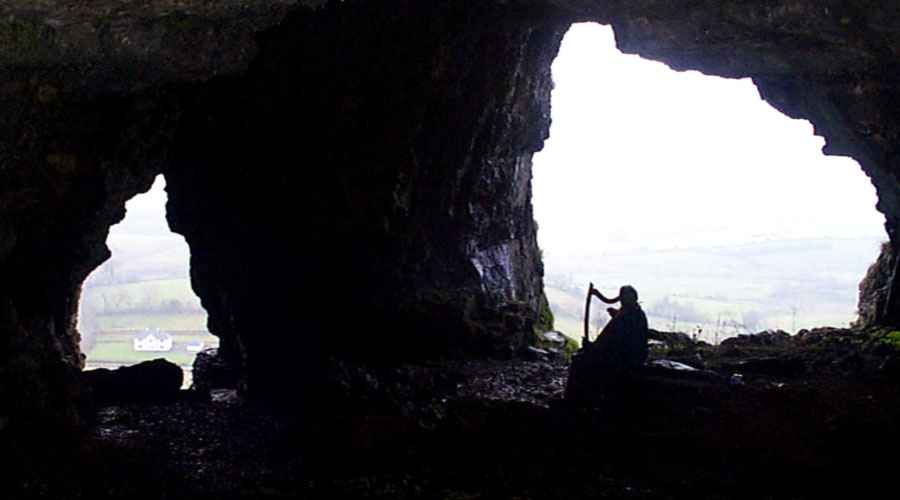Kesh Corann Mountain
The Hill of Kesh rises from the Plain of Corann at the western extreme of the Bricklieve Mountains in South County Sligo. The Mountain has been known throughout history and pre-history as a place of magic and wonder.
One of the older tales about the Mountain is found in the Dindshenchas collection. This story describes how a woman, Deirdre, of the Túatha Dé Danann was magically transformed into a sow when she ate some enchanted acorns. The sow was known as Cael Ceis, and she went on a rampage across the country destroying lives and property. She was pursued by the Hunters of Connaught, who could not subdue her and she slew many of them. Perhaps she is another version of the pig that gouged the Mucklaghs, a mysterious pair of earthworks at Rathcroghan, not far to the south.
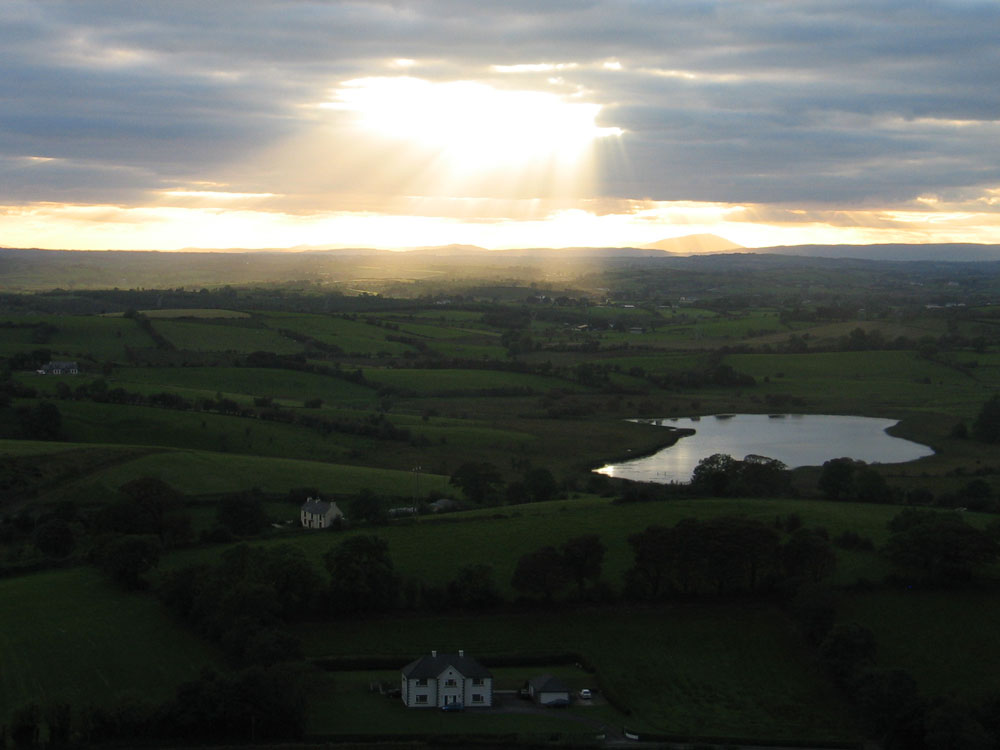
Finally Corann, who was the Harper of Dain Ceacht and resided at Newgrange put the sow to sleep with his skilful harping which we are told could 'charm the birds down out of the bushes or up out of the furrows the young peas'. The carcass of Cael Ceis then became the mountain.
The meaning of Ceis is debatable: old Irish words can mean many things. Ceis could be translated as The Small Bass Harp or The Wicker Roadway. Since Corann was said to be the best harper of the Dagda's household, the musical translation makes sense. The line of caves in the cliffs certainly brings music and wind instruments to mind. Corran, as in a sickle, was the old Irish name for the constellation of Leo.
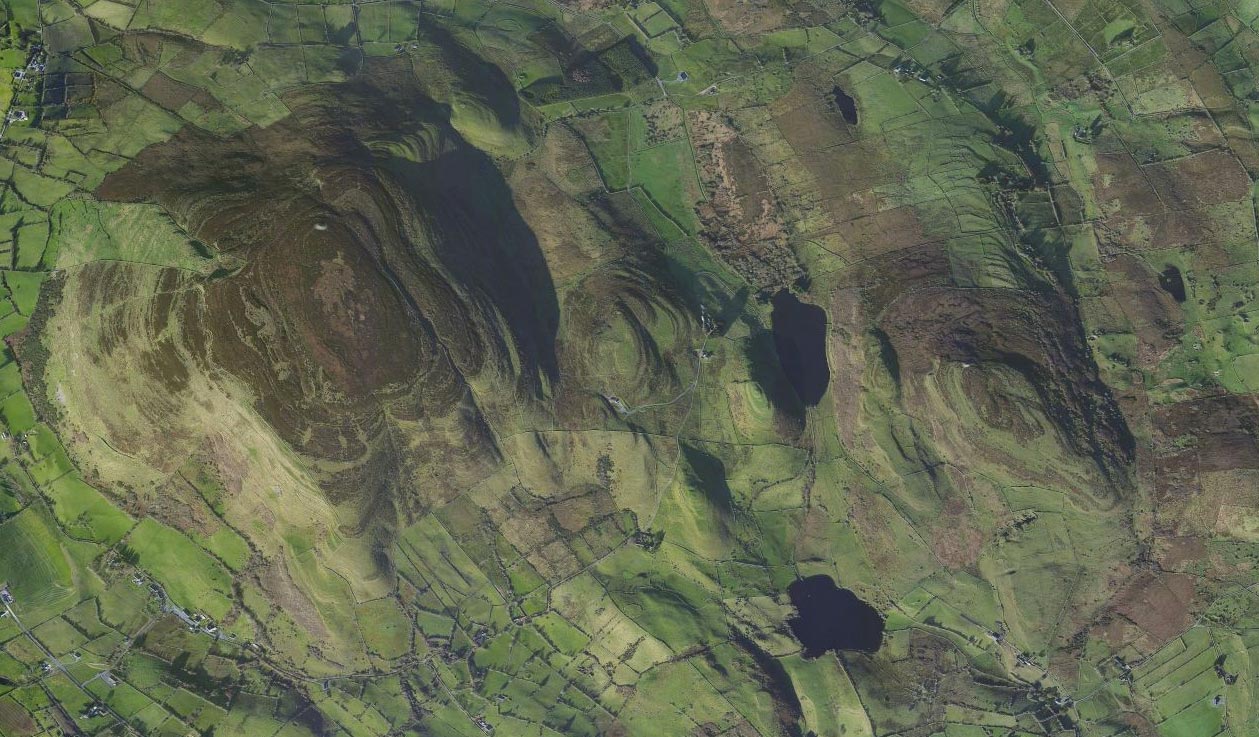
It is possible that the musical associations are a folk memory of the chanting, horns, harps, drums and other instruments that probably sounded from the top of the mountain and the caves during the ancient festival celebrations. My preferred interpretation is that the name refers to a sow with her litter of piglets, the smaller hills on the east side of Kesh.
The Enchanted Caves
In the tradition of all true Fairy Mountains, Kesh Corann is said to be hollow with a hidden lake within the hill. The sixteen famous Caves of Kesh Corann open in the cliffs on the west side of the mountain. As all the caves open to the west, they are a wonderful place to watch the setting sun around the time of the equinoxes, when sunlight floods far back into the deepest caves. Perhaps it was from sitting in one of these caves watching the sun set, that our ancestors first conceived the idea of building the cairns.
To the eastern side of that hill of Keash there is a cave called the school-cave which is situated in Edward Healy's field Corranaweelan, Ballymote. You would find pieces of slate pencils there which proves that people went to school there.
It is said that three men entered the cave They tied a long rope at the outside and carrying with them a lighted candle they entered the cave. The travelled on and on until they came to a lake where a little red woman was washing clothes. The candle was worn before they reached the lake so that they had nothing only the rope to guide them back.
Source: Kathleen Lavin, the School's Collection.
Cairns are really artificial caves, oriented to follow the motions of the sun and moon; indeed they are still referred to as 'caves' by older generations. Also, some of the Kesh caves have a cross-shaped interior, which is one of the most common features of Irish cairns.
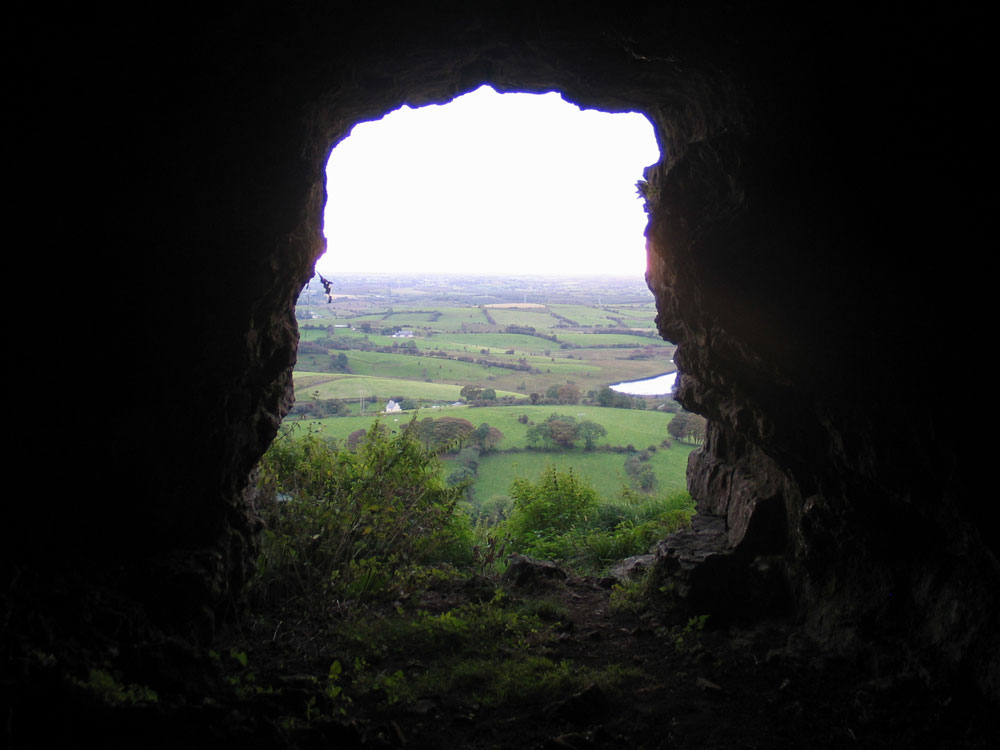
From the largest of the series, Cormac's Mac Art's Cave, also known as the Hermit's Cave, there is a spectacular view across Galway, Mayo and Sligo. In the distance, Croagh Patrick and Nephin stand out against the horizon. Within the encircling Ox Mountains stands cairn topped Mucklety Hill, another reference to pigs.
To the right stands beautiful green Knocknashee, The Hill of the Fairies, another very important ancient site. There are two cairns and an ancient village on its flat 300 metre summit. Looking north from just outside the cave, there is a fine view of cairn-decked Croughan and Doomore in the Ox Mountains, with lovely Knocknarea behind.
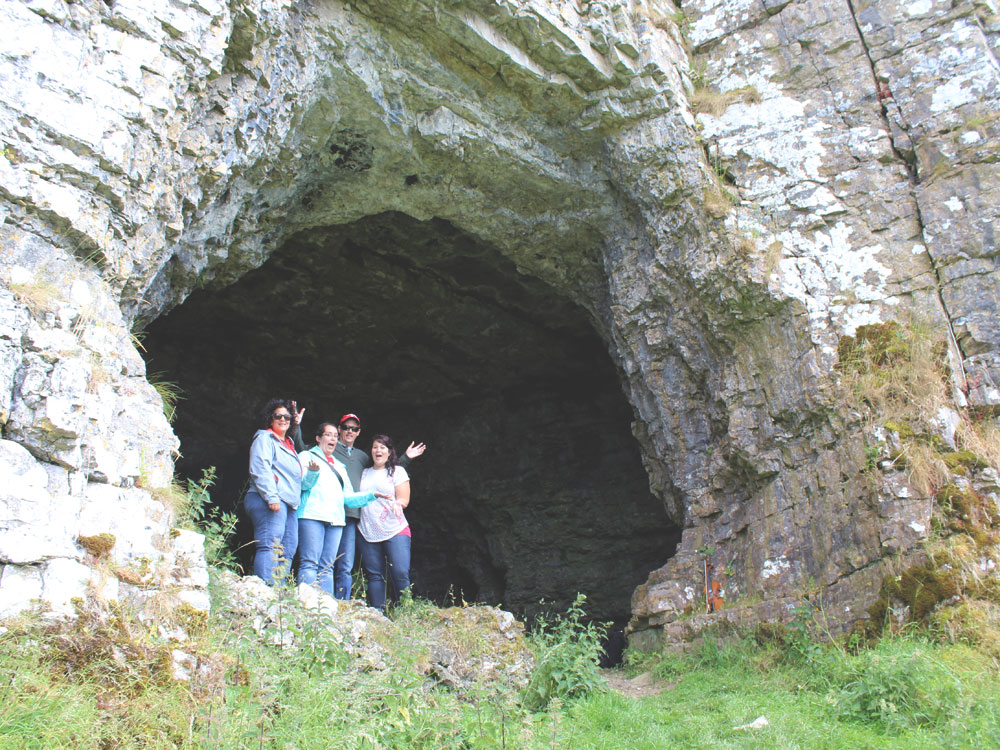
Further along the cliffs to the south and slightly higher up are three more caves, Coffey's Cave, Plunkett's Cave and the Water Gallery. These three are not as obvious or easy to find, but are worth a look. The Water Gallery is of a different character to the other caves as it rises, falls and twists like the inside of a gut.
At north-eastern end of Kesh Corann on a large spur by the monument at Cairnaweeleen is a small hole which opens to a large cavern called Pollagcaddy or The Thieves Hole. Perhaps this was used as a quarry by the ancient cairn builders as it is filled with loose stones. In the bottom recesses beautiful examples of limestone cauliflower formations can be seen. Nearby in the cliff face below is the Teacher's Cave, where a hedge school was conducted during the penal times.


